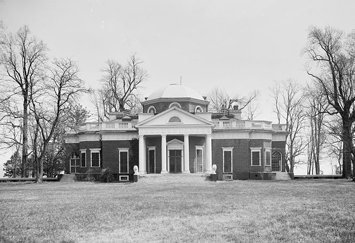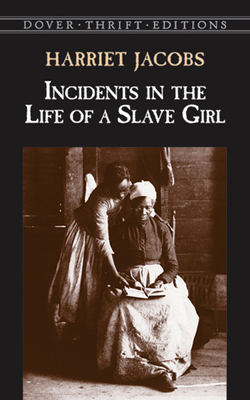By Final Call News

The July announcement that the “living quarters” for Sally Hemings at Thomas Jefferson’s Monticello plantation had been uncovered and were under restoration brought efforts to cover the Declaration of Independence author’s horrible history.
Before being dragged on Black Twitter and elsewhere, early articles referred to slave Hemings as the slave holder’s “mistress.” She wasn’t a mistress. She was a captive and a sex slave. So as the world recoils at the horror of women abused in today’s global trafficking tragedy and shame, this founding father of America can’t be given a pass.

Whitewashing Masta Jefferson downplays the horror of slavery and the abuses suffered by slave women at the hands of depraved slave masters. This was no love affair; it was the vilest of relationships. It was rape. It was sex abuse. It was all of the ugly acts committed against Black women that this country loves to forget–and loves to justify.
Historians believe that Masta Jefferson fathered six of slave Hemings’ children and some believe she may have been the half-sister of his wife–and a result of master-slave rape herself. And while her quarters were described as near Masta Jefferson’s in the Big House, leaving her at his disposal, experts conceded “her room had no windows and would have been dark, damp and uncomfortable.” Isn’t that a show of love?
The area was turned into a bathroom in the 1940s as another way to hide a controversy that dogged the third president of the United States and his Charlottesville, Va., plantation in life and after his death. Monticello is undergoing a multi-million renovation with promises to tell the story of the enslaved people and their master. If this is any indication, a whitewash and sugarcoating of the most horrific aspect of human history can be expected. Masta Jefferson owned over 600 slaves in life, over 100 were sold to pay debts at his death–and slave Hemings was never granted her freedom.
If no woman snatched, tricked, drugged or beaten into prostitution today can be expected to enjoy it and have a relationship with her abusers, how could a slave? A slave whose abuse allegedly began when she was 14-years-old and her master was in his mid-40s?

Ariel Castro, who committed suicide while awaiting justice, is remembered as a monster for his kidnapping, beatings and rapes of Amanda Berry, Gina DeJesus and Michelle Knight, who escaped his clutches in 2013 in Cleveland. That the deviant made Ms. Berry pregnant didn’t change a damn thing, it only added to the horror of his acts in imprisoning these women for over a decade.
What was life like for a Black slave girl, born out of rape, in the 18th century with the unchecked power of her master and no place of refuge?
“Pity me, and pardon me, O virtuous reader! You never knew what it is like to be a slave; to be entirely unprotected by law or custom; to have the laws reduce you to the condition of a chattel, entirely subject to the will of another. You never exhausted your ingenuity in avoiding the snares, and eluding the power of a hated tyrant; you never shuddered at the sound of his footsteps, and trembled within hearing of his voice,” wrote Harriet Jacobs, who was a slave in North Carolina and published her own story, “Incidents in the Life of a Slave Girl,” in 1861.
She wrote of the betrayals and sales of faithful Black servants who were promised good treatment by masters, given nothing and were often sold. She wrote of mothers nearly driven mad when their children were sold and how these Black women prayed for death.
“I once saw a young slave girl dying soon after the birth of a child nearly white. In her agony she cried out, ‘Oh Lord, come and take me!’ Her mistress stood by, and mocked her like an incarnate fiend. ‘You suffer, do you?’ she exclaimed. ‘I am glad of it. You deserve it all, and more too,’ ” reads another passage from “Incidents In the Life of a Slave Girl.”
There is the story of Celia, a slave girl in Missouri, whose master Robert Newson started raping her in 1850. She was 14-years-old. He ravages her for five years and she bears two children. Celia and another slave, George, have a relationship and she gets pregnant. George doesn’t want her to have sex with the master anymore. In June, 1855, Master Newson pays no heed to Celia’s plea to not abuse her anymore. He comes toward her cabin. She strikes him twice with a large stick, killing him. She puts his body in her fireplace and lights it. She eventually admits to killing her rapist. Celia is tried and hung December 21, 1855 in Fulton, Missouri.
A Bowdoin College website noted, “Slave women were forced to comply with sexual advances by their masters on a very regular basis. Consequences of resistance often came in the form of physical beatings … . Most often the masters were already bound in matrimony, which caused tension and hatred between the slave and the mistress of the house. Many ‘mulatto’ or racially mixed children also resulted from these relations. Because the ‘status of the child’ followed that of his or her mother, the child of a White man would not be freed based upon patriarchal genealogy. These children also became a sore reminder for the mistress of her husbands infidelity. The following passages sketch the nature of the master-slave relations, and their consequences:
“ ‘Maria was a thirteen-year-old house servant. One day, receiving no response to her call, the mistress began searching the house for her. Finally, she opened the parlor door, and there was the child with her master. The master ran out of the room, mounted his horse and rode off to escape, ‘though well he knew that [his wife’s] full fury would fall upon the young head of his victim.’ The mistress beat the child and locked her up in a smokehouse. For two weeks the girl was constantly whipped. Some of the elderly servants attempted to plead with the mistress on Maria’s behalf, and even hinted that ‘it was mass’r that was to blame.’ The mistress’s reply was typical: ‘She’ll know better in the future. After I’ve done with her, she’ll never do the like again, through ignorance.’ ”
The abuse of Black women must never be forgotten, nor justified and the old falsehoods about slavery must always be rejected. We dishonor our ancestors and their suffering when we accept lies and romanticize their hellish suffering.












